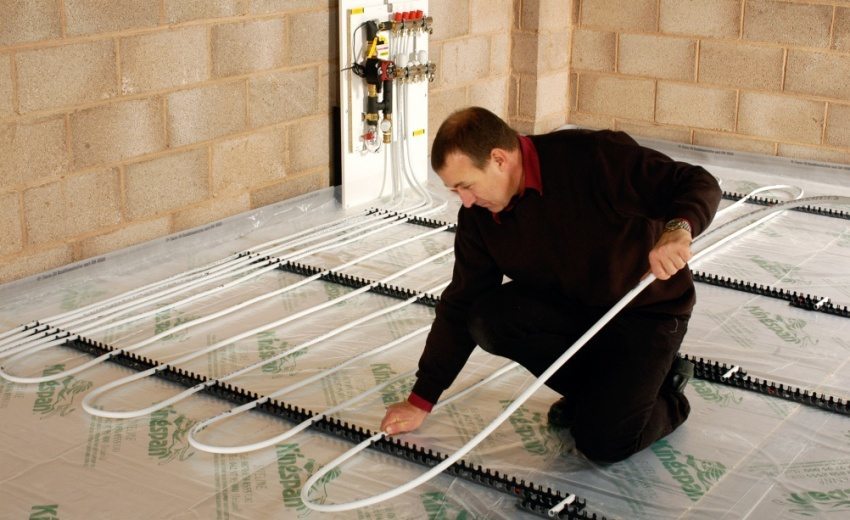Content
- Flax Seal
- Sealing with FUM tape or plumbing thread
- The use of sealants
- Non-hardening sealants
- Hardening compounds
- Anaerobic Sealants
Threaded connections used in plumbing systems, heating and gas supply must be completely tight. To achieve this only due to the quality of the thread itself, without the use of additional materials, it is almost impossible. There are several methods of sealing, but recently anaerobic sealant for threaded joints has gained immense popularity among masters. Why?

Naturally, the main task of such seals is the complete sealing of joints. The material used should completely eliminate the leakage of water or gas through the threaded gap. But a high-quality sealant should also have other important properties:
- It should not contribute to corrosion of the connected elements. On the contrary, the material applied to seal threaded joints is designed to protect these vulnerabilities from destruction caused by exposure to water or aggressive substances.
- All sealing materials, including sealants, must have good adhesion properties to prevent them from being squeezed out of the joints under the pressure of water or gas.
- It must be resistant to temperature extremes, withstand vibrational vibrations.
- The materials used to seal the pipes should not significantly complicate the assembly or disassembly of the connection. It is very convenient if, after dismantling, the sealant can be easily removed and reapplied.
Another important feature that you should pay attention to when choosing a sealant or sealant for threads is ease of use. Very often, such compounds are located in inaccessible places where any manipulation is difficult. In such cases, sealants have a clear advantage, since they do not require such accurate and thorough application as sealing tapes or flax.

Flax Seal
This method is the oldest. That is how the pipe joints were sealed in Soviet apartments. If the store does not have other sealants, then flax and plumbing paste will be found for sure. But this seal has a number of significant drawbacks:
- According to the rules, flax is used in combination with drying oil and lead minium. Lead prevents corrosion of the compound, and drying oil fills the pores of flax like a polymer. But finding quality ingredients is not easy, so often lead minium is replaced with iron, which only accelerates the oxidation of metal components. Some craftsmen come out of the situation using silicone-based automotive sealants.
- The difficulty of laying flax thread on the thread. What is so easy for experienced plumbers can cause a lot of difficulties for a layman. It is unlikely that it will be possible to correctly wind the flax on the connection the first time, and any error in performing this operation will lead to the fact that the seal will not last very long.
- Flax does not tolerate changing working conditions. Therefore, in heating systems, its locks will be destroyed much faster. Also, this type of sealant does not respond well to aggressive environments.
- High hygroscopicity of the material leads to its swelling, which is why insufficiently strong joints can simply burst. For example, it is not recommended to use flax when sealing aluminum radiators.

Sealing with FUM tape or plumbing thread
Due to the ease of use, these materials have gained high popularity. To seal most of the threaded connections in the apartment, it is enough to wind the number of turns of tape on the pipe, indicated in the instructions and tighten with a wrench. At the same time, special care is not required when laying, on the contrary, many manufacturers recommend winding a little diagonally. The connection to such a seal is easy to disassemble if necessary.
At the same time, the fum tape does not tolerate vibrations, clings poorly to small threads, and can be damaged by rough cutting. It is not recommended to seal pipes of significant diameter with it.

The use of sealants
The most optimal method at the moment is the use of various sealants. They provide not only complete isolation of the system from leaks, but also protect metal parts from corrosion.
Sealants are very convenient for installation and, if necessary, allow to disassemble a threaded connection without significant effort and damage.
The following types of sealants are distinguished.

Non-hardening sealants
Available in the form of thick and viscous pastes consisting of polymers and synthetic resins. This consistency allows them to provide high-quality sealing of the joints, quietly tolerate vibration loads. Such sealants are often used in combination with other sealants.
Important! Non-hardening sealants cannot be used in high pressure systems - the composition will simply squeeze out of the thread. They also do not tolerate exposure to aggressive materials.
Hardening compounds
Solvent based. Such substances are also known as adhesive-sealant, so they provide not only tightness, but also reliable fixation of the connection.
How much does such material dry? Typically, the manufacturer indicates the curing time on the packaging; it can range from a few minutes to several hours. It should be remembered that at low temperatures the crystallization time increases significantly.
Such sealants have proven themselves in high pressure systems, since after hardening they are highly resistant to extrusion.
Their main disadvantage is the presence of shrinkage during solidification, which leads to the need for additional tightening of fittings. Another unpleasant feature is the inability to dismantle the joint without destroying the sealing layer. After disassembly, it will have to be removed and applied again.

Anaerobic Sealants
The most convenient and reliable sealants at the moment. Their liquid structure allows you to easily penetrate into the narrowest gaps. In air, such a composition does not change its properties, but when it enters a threaded connection, upon contact with metal and in the absence of air, it sharply changes its properties and crystallizes. It turns out durable plastic, reliably sealing the threaded gap. In this case, excess glue squeezed out after the assembly of the joint can be used to process the next pipe, and the sealant that gets inside can be easily washed off with water.

Using anaerobic sealants is very simple:
- All surfaces of the threaded connection must be cleaned and degreased. It is enough to wipe new parts with a solvent, old ones - to process with a special metal brush.
- The solution is applied to several threads, for convenience you can use a regular brush.
- The connection is tightened manually, without the use of keys.
- Excess sealant protruding from the outside is removed with a tissue. You can use it to seal another connection.
- The hardening of the material will take a couple of hours, after which you can safely use a threaded connection. More precisely determine the crystallization time will help manufacturer's recommendations. Do not forget that it increases significantly at low temperatures.

EXPERT SITE
Tsugunov Anton Valerevich
Master Station Wagon
- Since 2003, I have been engaged in the repair and decoration of premises.
- Over 100 completed objects.
- I appreciate the quality, more than the quantity!
Personal page >>>
Friends!
I offer you the service "Friend Builder"
As this site develops, subscribers and visitors turn to me more and more often asking for help with advice on various issues of repair and decoration.
Questions are sometimes asked very complex and interesting. You can’t write an article for each situation, so I decided to advise you individually.
Thanks to you, friends, a new direction of my favorite work has been born - share your experience and benefit everyone who is undergoing repairs!
Get a one-time consultation from me >>>
Order full apartment repair support >>>


